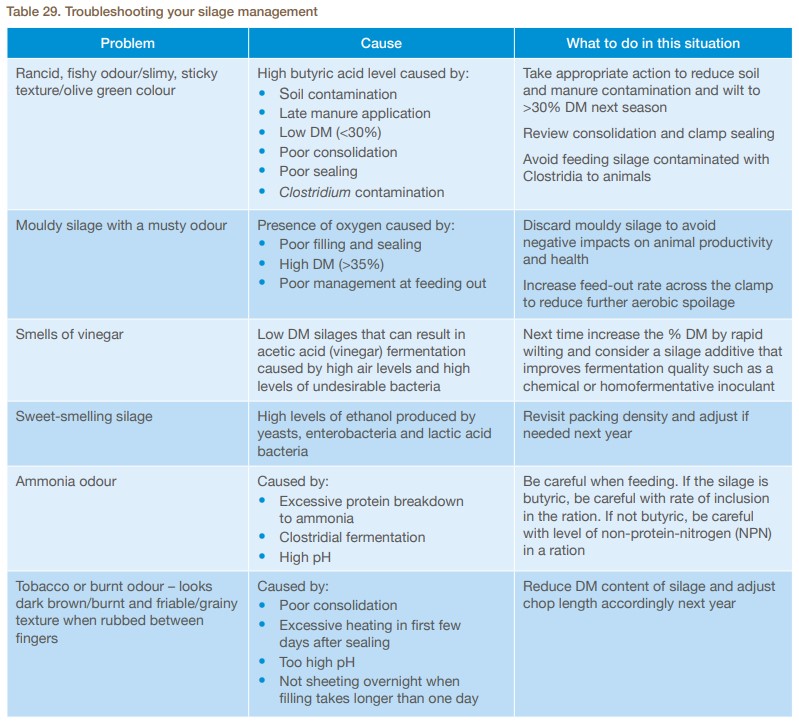- Home
- Knowledge library
- 2021 update of the Forage First guide
2021 update of the Forage First guide
The Successful silage section in the Forage First guide was updated in April 2021 and is highlighted below. This page lists the changes that you should take into account when reading your printed copy that has not been revised.
Page 72
- Legume silage, second paragraph should read ‘As a high-yielding legume, its roots naturally fix nitrogen, making it a cost-effective crop to grow on its own'
Page 74
- The first sentence should read ‘Remember to allow some tolerance (20–25%) when preparing a silage budget’
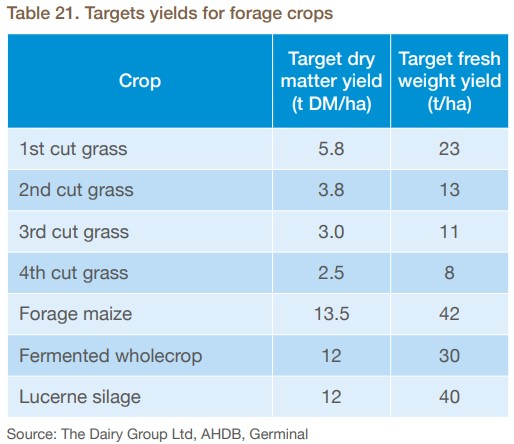
- Last bullet point in step 3 should read ‘Using a yield monitor on the forage harvester’
- Under ‘How to address a deficit’, an addition is included:
- Monitor dry matter (%) as this will have an effect on over- and under-feeding of silage
Page 76
- Under Phosphorus and potassium index, an addition has been included ‘Note: If preparing silage for dry cows, do not use farm manures, slurry, or apply artificial fertilisers containing potassium to help reduce problems pre- and post-calving’
- Addition to orange box under Nitrogen ‘Target 0.15% nitrate nitrogen on a fresh matter basis before cutting’
- Figure 35 IGER has been updated as the reference source
- Figure 34, column 2 row 3 should read ‘Silage yield and quality poor’
Page 80
- Last bullet point after Figure 38, Target nitrate-nitrogen levels has been updated to below 0.15% fresh matter
- Under Top tips for cutting grass silage, second bullet point should read ‘Mow when dry (no rain or dew) and preferably in the in the morning if ensiling can be later the same day and the target DM reached’
- Third bullet point should read ‘Once cut, the grass leaf starts to die and continues to respire, thus losing DM and nutritional value’
- First bullet point in column 2 should read 24 hours
Page 81

- First bullet point after photo should read ‘Mowing crops at canopy closure (lighter crops with more leaf and less stem) leaving a stubble height of 5–7.5 cm to improve air flow’
- First sentence under To use or not to use an additive, has been replaced with ‘Additives containing 1,000,000 L plantarum inoculation/g fresh forage improves silage quality and animal permanence (Davies et al. 1998)’
Page 82
- Paragraph 1 has been replaced with ‘Heterofermentative and homofermentative additives reduced protein quality and sugar preservation compared to untreated and homofermentative only inoculants (Davies, et al. 2002). See Figure 40’
- Under points to remember, bullet point one has been updated to ‘High quality silage can be improved by using the correct additive’
- Figure 40, plus elevated nitrate has been replaced with 0.15% FM; sugars have been replaced with 3%; no additive required has been replaced with seek independent advice
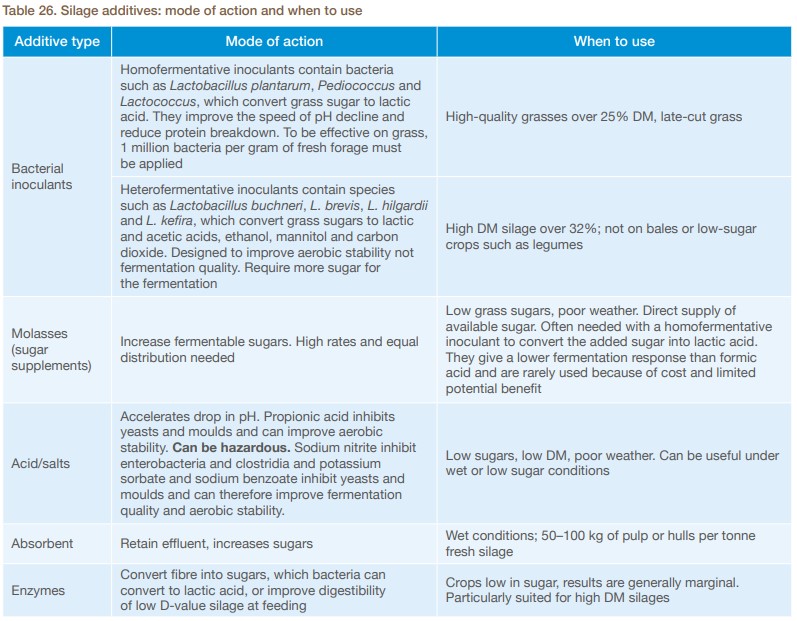
Page 83
- Under Wilting, line 4 should read ‘Rapid wilting and ensiling minimises these losses by quickly creating acid levels to stop further undesirable processes. This is why good consolidation in the clamp and quick sealing is crucial’
- Under Sugar should read 2–3% FM sugar
- Under Sugar, line 6 should read ‘thus lactic acid production may be insufficient to stop all undesirable processes’
- Under Figure 3, line 10 should read ‘Clostridia convert residual sugars and lactic acid to butyric acid'
Page 84
- Second bullet point should read 15 cm deep
- Fifth bullet point should read 20°
- Last paragraph under key points should read ‘Follow this with conventional black plastic sheets to reduce the risk of puncture. Weight the sheets with tyres, gravel bags or sandbags to ensure they stay in close contact with the silage and create an anaerobic environment. A net over the clamp will protect silage sheets from bird and wildlife damage’
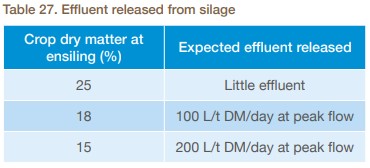
- Last paragraph should read ‘The higher DM – generally 35–45% to avoid bale distortion, which leads to air ingress, means that fermentation is more restricted so it is essential to speed up this process by using an additive to enhance speed of fermentation, which will reduce the growth of undesirable microorganisms, improve nutrient preservation and aerobic stability’
Page 85
- Bullet point 6, inadequate has been replaced with uneven and a bullet point has been added:
- IGER research showed that it is important to set up the wrapper properly to cover the entire bale with the requested number of layers of wrap. A small region with one layer of wrap less significantly increased the levels of Listeria growing in the silage
- Bullet point seven should read ‘Using black wrap has been shown to be beneficial for UK conditions, according to trials at IGER’
- Under storage quality, bullet point one should read ‘24 hours of bailing (or as quickly as possible)’ and bullet point two has been removed
- HSE guidance for one bale high should read ‘<25%’
- Column 2 paragraph 3, toxins has been removed
- Under minimising silage losses, losses has been replaced with 20% and 30%
Page 86
- Column 2 first bullet point should read ‘Ensure you move quickly across clamp faces to avoid aerobic spoilage’
- Under How much silage is available, the silage density has been updated to 292–805 kg FM/m3 and silage DM to 28–32%
Page 87
- Under Interpreting silage analysis, WSC has also been included under preservation
Page 88
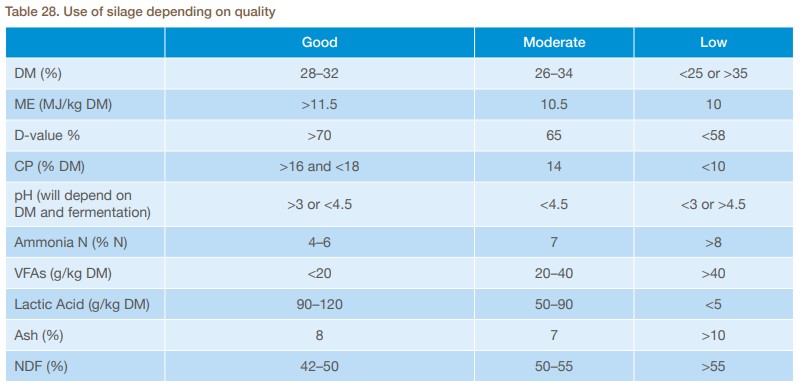
Page 89
